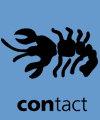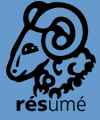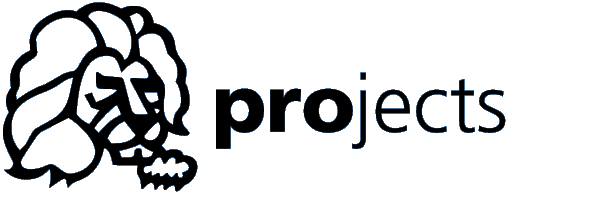
...Media collections
...Computer-mediated communication
...Art, performance, and Other
Learning Technologies
Breathwear
(Stanford University, 2010-2012)
Breathwear was my final Ph.D. dissertation project at Stanford. It sends your breathing patterns to your iPhone to help you achieve your own goals with regard to breathing, state, and mindfulness. I consider it to be the world's first "mindfulness sensor".
Publication currently in submission.
Breathwear website,
YouTube video and
NY Times press.

d.compress: Designing Calm
(Stanford d.school, 2012)
I designed and led the world's first course on designing calming technology. My co-instructors: Dr. Steph Habif, Dr. Roy Pea, Gus Tai (Trinity Ventures), and TA Emily Goligoski.
The course was taught to undergraduate, masters, and Ph.D. students in an array of disciplines.
Course blog and
NY Times press.
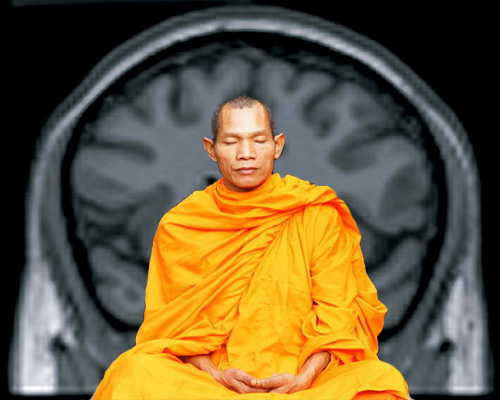
Calming Technology Lab
(Stanford University, 2011-2012)
I run the Stanford Calming Technology Lab, calmingtech.stanford.edu.
My dissertation topic at Stanford concerns the design and evaluation of what I call "calming technologies".
These are techologies that induce a state of cognitive, physiological, or emotional calm in their user. My focus
is on improving respiratory awareness and patterns.
Moraveji, N., Oshidary, N., Pea, R., Fogg, BJ. (2011). Calming technology. ACM SIG-CHI Workshop
on Personal Informatics. Vancouver, Canada.
2011,
Vancouver,
Canada.
Research blog and Twitter
I teach d.compress: Designing Calm
at the Stanford d.school and in 2011 co-taught
a course with BJ Fogg on
creating calming habits with technology.
Peripheral Paced Respiration
(ACM UIST 2011)
I am working on methods of integrating biofeedback practices around pacing respiration into the desktop operating system to improve the physiological response
of computer users.

ClassSearch
(Microsoft Research, ACM CHI 2011)
Student develop Web search skills in isolation, if they develop at all. The powers of social learning, imitation, and
sociocultural means of acruing expertise currently do not apply to Web search skills. This project addresses this problem by
creating a classroom environment where co-located students can view their peers' approaches to searching, creating a powerful
learning tool.
ClassSearch:
Facilitating the Development of Web Search Skills through Social Learning
Neema Moraveji, Meredith Ringel Morris, Dan Morris, Mary Czerwinski, Nathalie Riche
Proceedings of ACM CHI 2011, May 2011
Details
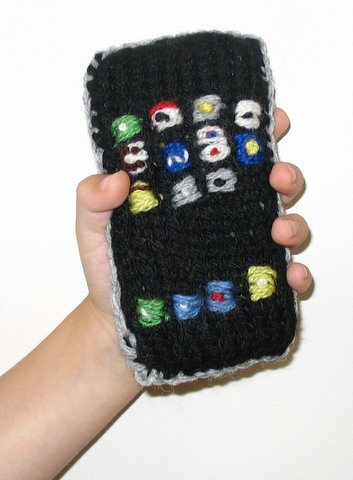
'iPhone
Learning Apps course'
(Stanford
University,
Winter 2010 & 2011)
Course title: "The Design of Technologies for Casual Learning".
I worked with Prof. Shelley Goldman to devise the
first known course on designing casual learning technologies
for the iPhone/iPad (and other mobile devices in general). I am focused on integrated principles from HCI and from
theories of casual learning (including distinguishing between implicit/informal/statistical/casual learning.
I recruited Steve Marmon (Apple Corp.) and Troy Brandt
(author of the Complete Idiots Guide to Developing iPhone Apps) to teach the programming lab.
At least one startup has come out of this class. Student projects from 2010 and 2011 are
available.
(Thumbnail
from DaddyTypes.com)

DesignBehavior.com
(Stanford,
2010-2011)
My research blog concerning behavior change, self-shaping, commitment devices, and persuasive technology.
This is an inquiry into how we can better support
behavior change by redesigning our virtual environments instead of relying on
self-discipline and willpower alone.
DesignBehavior.com
VeggieMagic
(Stanford,
Spring 2010)
"How do I easily keep track of what I'm eating and improve my dietary habits?" Simple: grab a snapshot of everything you eat, the photos go
out to Mechanical Turk and you get back your nutrition information.
Details (proudly ripped off
by DailyBurn!)

Improving Search Expertise
(Google & Stanford,
Summer/Fall 2010)
What constitutes a 'search expert' and how can it be improved in a scalable manner?
How can we automatically and scalably improve search performance?
What are the cognitive structures and practices underlying web search expertise? Do they mirror expertise in other skills, such as chess?
Details coming soon...

LineHive.com
(Mozilla,
Winter 2010)
Hyperlink storytelling for insight-sharing. You add hyperlinks, we automatically create a mini-story from them.
We were finalists in the Mozilla Foundation's
contest (supported by the MacArthur Foundation) to support educational initiatives built on the Mozilla
platform.
Details

Mouse-based text entry (ACM CSCW, 2010
Best Paper Nominee)
We designed text-entry methods for shared-display systems where a number of people are interacting with a system
and need small amounts of text-entry (sans keyboard).
Video (PDF coming soon)
Mischief (MightyMice, Mouse on
Each Mesk) (ACM CHI, 2006-2009)
Each student or small group gets a wireless mouse. They interact on a single shared display
from their respective desks, enabling a low-cost, scalable interactive
classroom. Mischief is
now a real product.
Details, Papers, and Videos

'Intro to HCI' course redesign
(Stanford
University,
Summer 2008)
I worked with Mike Krieger under the tutelage of Prof. Scott
Klemmer
to redesign the project themes, lab
structure, and
other aspects of the Intro to HCI course in Stanford CS.
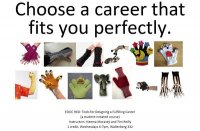
Tools for Designing a Fulfilling Career (Stanford
University,
Winter 2009)
I started and am the lead instructor for this course, the first of its kind at Stanford University. We survey theories and practices for designing a
satisfying career. The course will be taught next in Fall 2009. Join the Facebook group to get updates.
PathFound.com (Stanford University, 2008-2009)
PathFound.com helps young people find their career path of interest through introspection and social feedback.
Details coming soon...
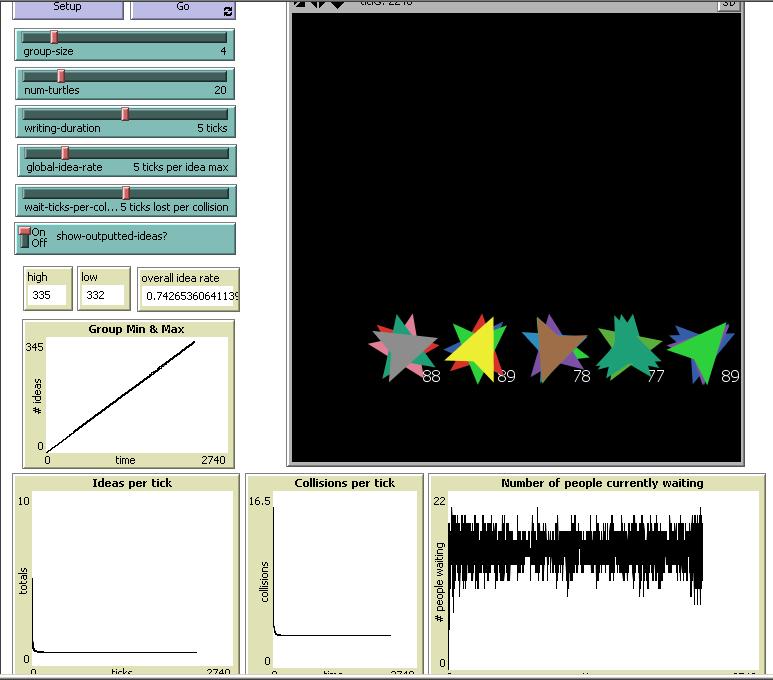
Modeling Group Brainstorming (Stanford University,
Fall 2008)
I devised and created a NetLogo simulation that models how different factors affect group brainstorming performance.
Paper

Comicboarding (ACM CHI, Spring 2007)
A participatory design method for use with children, especially those from developing countries.
Check out the user's guide: parts one and two.
Details

Games addressing 'Mute English' (HCI International, Spring 2007)
Addressing 'Mute English' in Chinese children via games that encourage spoken interaction.
Details
and UMich
student site

Working in a team of 5, we went through the entire user-centered design process to redesign Texas Instrument's line of graphing calculators.
Details
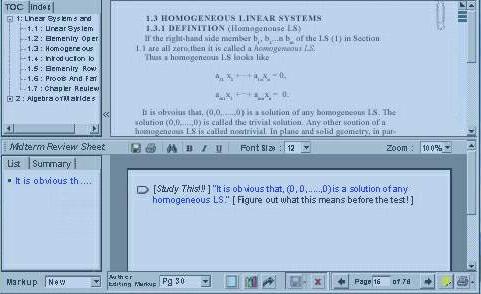
Integrating 'Review Sheet' functionality into used by electronic textbooks.
Details

Teaching CS via HCI at CMU's summer program top minority high school students.
Details
Media Collections

MashNav: Imprecise Keyboard Input (ACM
UIST, 2010 contest)
By using Microsoft's experimental pressure-sensitive keyboard, we
designed a means of using imprecise input to navigate the desktop and
documents.
Video
Picpax (Picpax LLC, 2007-2009)
A novel service that offers hand-editing of media collections. You'll be hooked after one try.
Try it free!

Mobile Media Conversations (MSR Asia, 2005)
Affordances to use the 'quoting' metaphor to enable
contextualized mobile
media conversations.
Details
and Video

Internet Video Perusal (MSR Asia, 2005 - 2006)
Interaction design for passive persual of Internet video on a TV interface.
Details and Video1 and
Video2

Informedia Client Design and Evaluation (ACM IR, Etc., 2002 - 2004)
Multimedia information retrieval and visualization techniques.
Details
Computer-Mediated Communication

TaskMarket: A micro-task
economy
(MSR Asia, Spring 2007)
Enabling scenarios like offering $5 to have your document
formatted perfectly.
Launched as a public
preview

Peripheral IM Device (ACM CHI, Spring 2007)
An information appliance interface to IM, designed for urban Chinese parents.
Details and Video
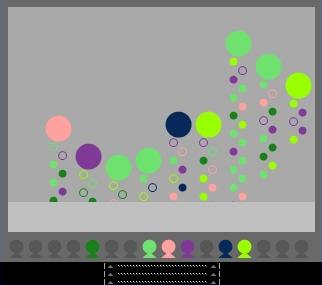
"Apeer",
Social Communication Tool (ACM CHI, Spring 2004)
A peripheral social visualization of brief topical discussion among small
groups.
Details
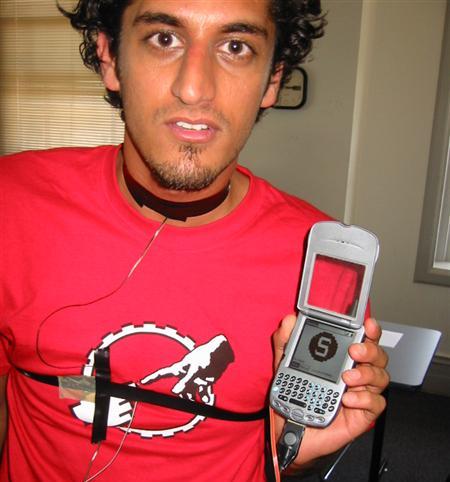
We designed and built a working prototype of a contextually-aware mobile phone.
Details

RSS
Aggregators (MSR Technical Report, Spring 2007)
A public survey on research.microsoft.com to understand how experts use RSS aggregators.
Results were made public.
Survey
Results, Tech Report

BodyNote is a haptic device aimed to supporting casual emotional communication between partners seperated over distances during a typical workday.
Details
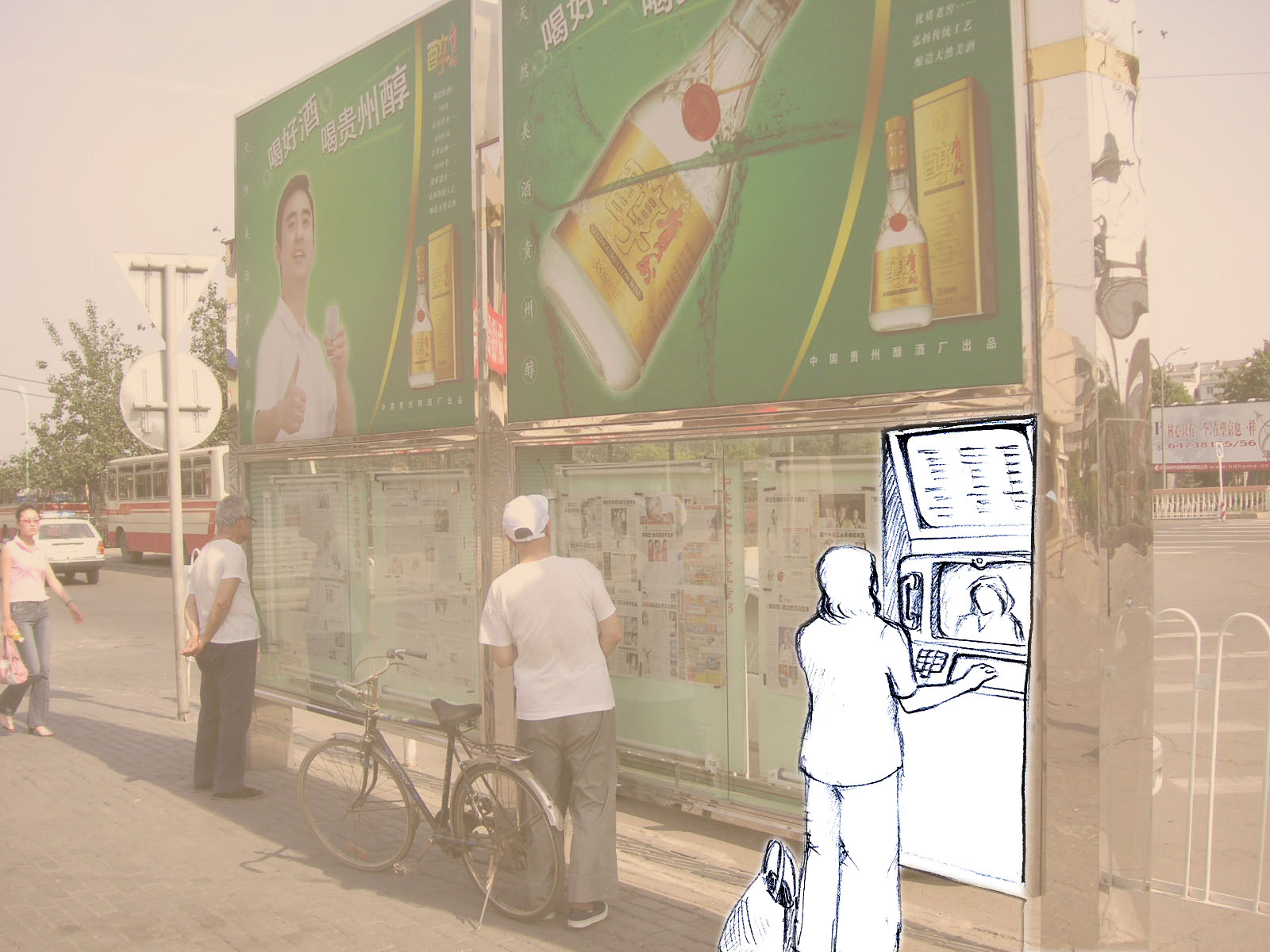
Videomail for Migrant Workers (ACM DUX, Fall 2005)
A design exercise to design a communication device for Chinese migrant workers.
Details

A presentation I gave concerning the proflieration of "Smart Mobs".
· What are Smart Mobs? (WMV, 7.5min, 8mb)
· Social Implications of Mobile Communications (WMV, 20min, 12mb) & PPT deck.
· dWave: Enabling Smartmobs (WMV, 23min, 10mb)
Featured on SmartMobs.com.
Art, Performance, and Other
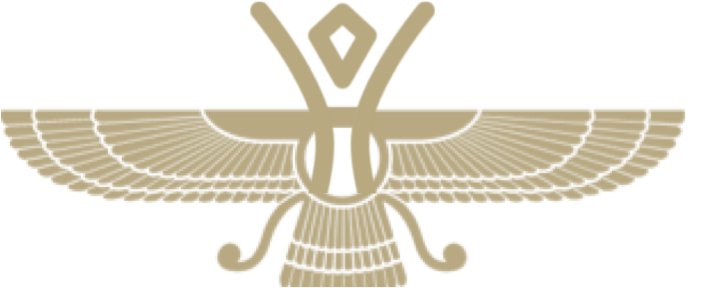
Burning Mazda
(Black Rock City, August 2010)
I created our pod's symbol for Burning Man 2010. It combines the symbols for Ahura Mazda and
Burning
Man.
You can purchase tshirts, etc., with this logo on them.
Buy Burning Mazda t-shirts, etc. or print for your own purposes by clicking the icon
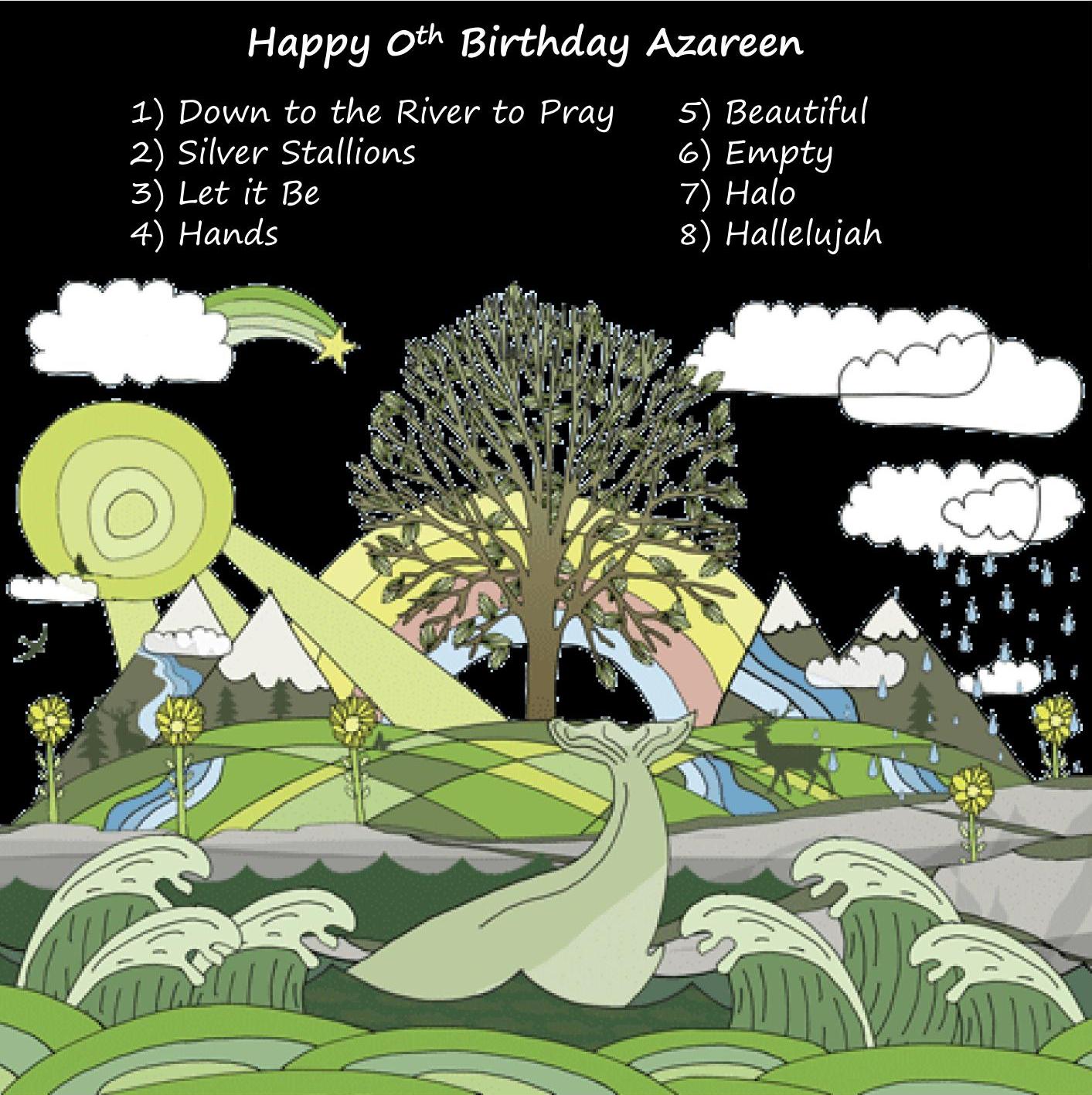
Lullaby CD
(Seattle, August 2009)
My first niece, Azareen, was born August 22, 2009. I orchestrated the recording of a Lullaby CD for her with friends in Seattle who are vocalists (I play guitar), recorded solely on an
iPhone 3Gs using the Voice Memo app. All 8 tracks are cover tunes. Download
Azi2009.
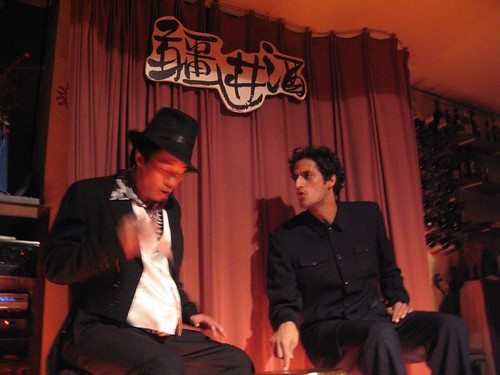
Improvisational Acting
(Beijing, 2006-2007)
I was a co-founder of Beijing Improv. I began with the Beijing Actor's Workshop and have worked in serious, experimental, musical, and comedic
styles. All as a complete amateur.

Direct Pointer
(CHI, 2006)
Use a cameraphone and network connection to control a pointer on
a large display: enabling a future of shared interactive displays in
public spaces (e.g. billboards, advertisements).
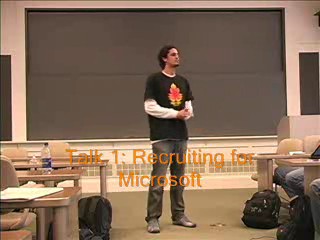
Public speaking
(CMU, Spring 2003)
A short video showing the evolution of my public speaking skills.
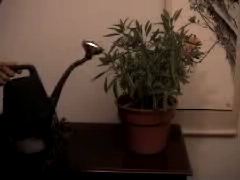
A set of three devices our team created to solve the problem of remembering to water houseplants.
Details (Flash presentation & movie)

My group won the CMU's HCI Institute's annual T-shirt design contest.
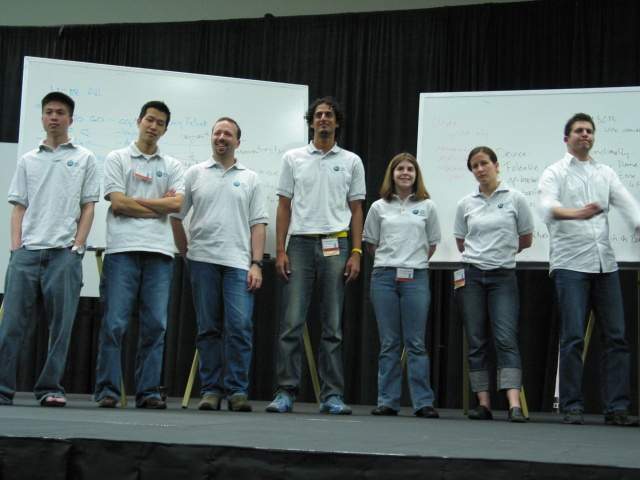
My group's team won the annual CHI Interactionary Design Contest in front of a live audience of HCI academics and professionals.

A music video using irony to subvert MTV-influenced pop culture.
Crazy Game of Poker (WMV, 8mb, 5min)
DISCLAIMER: All events are theatrical reenactments. All characters are actors and all places and timelines are the script of a fictional event.

Public speaking
(CMU, Spring 2003)
A short video showing the evolution of my public speaking skills.
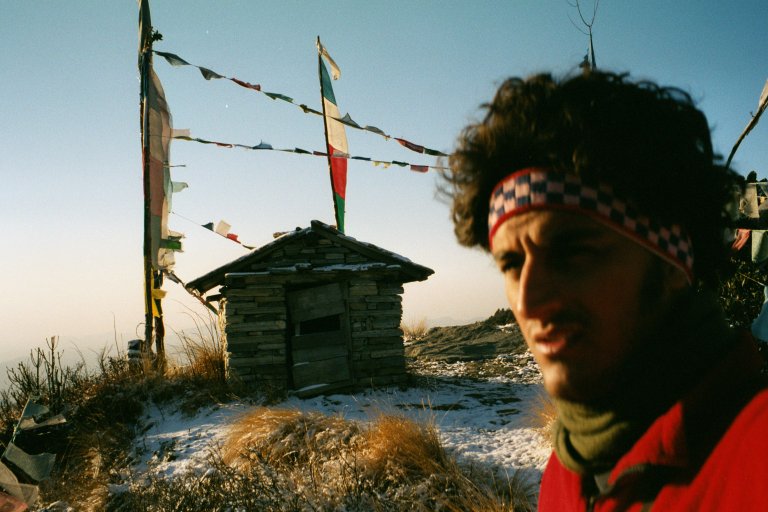
A CMU University Lecture Series presentation I gave about my backpacking trip across 13 countries during 1999-2000.
A Spiritual Journey (PPT + WMA, 60min, 18mb).
Unzip the two files into a folder and open the presentation. Press F5 and the show will start (along with the sound) and transition automatically from one slide to the next. There is no video, it's a slideshow + sound.

An art project that allows users to experience remote locations through an actor.
IBU: We Hardly Knew You (WMV, 7.5min, 8 mb)
IBU (read "I Be You") is an immersive experience where the user steps into a booth and essentially experiences the world from the point of view of another person; i.e. the user steps into the head of the actor. This is accomplished using real-time audio, video, and biometric data in a 2-way communication between the actor and the user.

Not yet available


